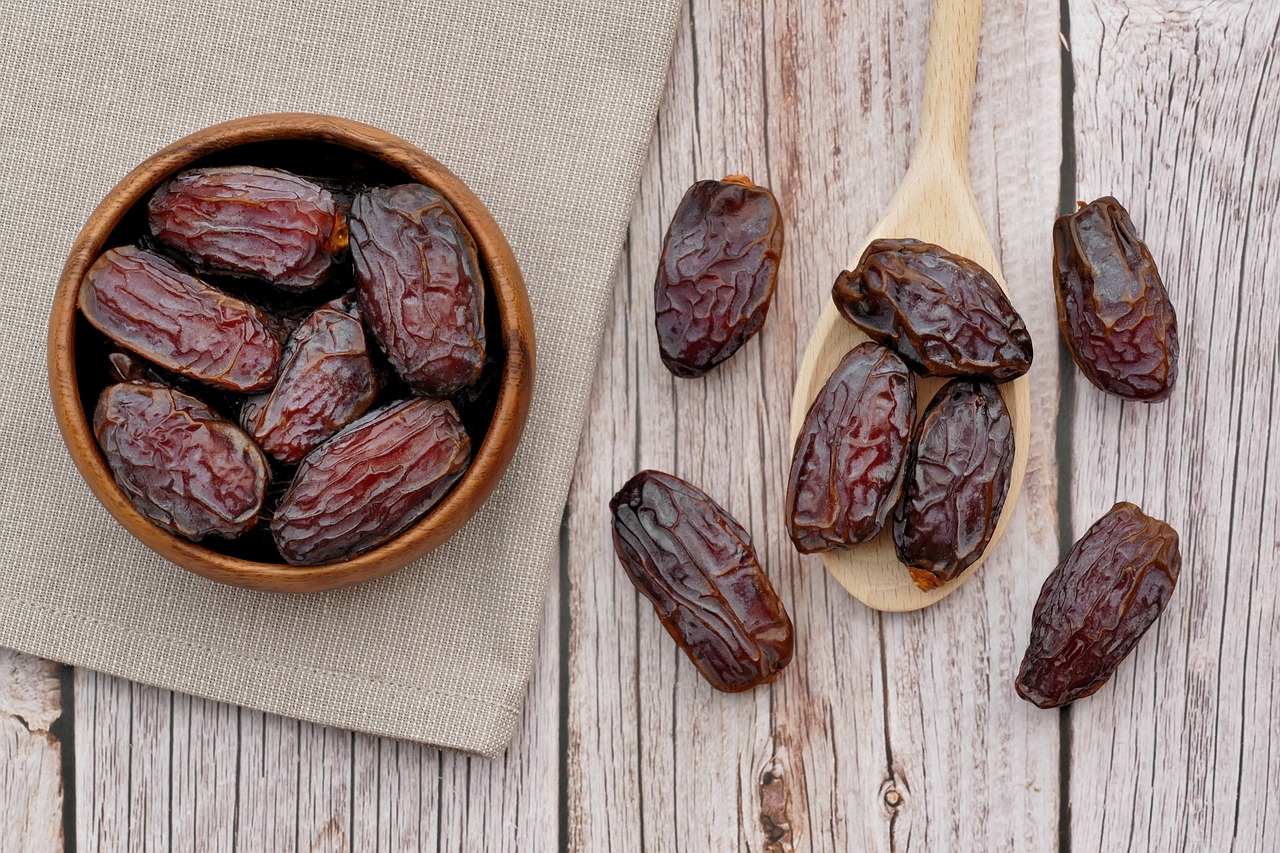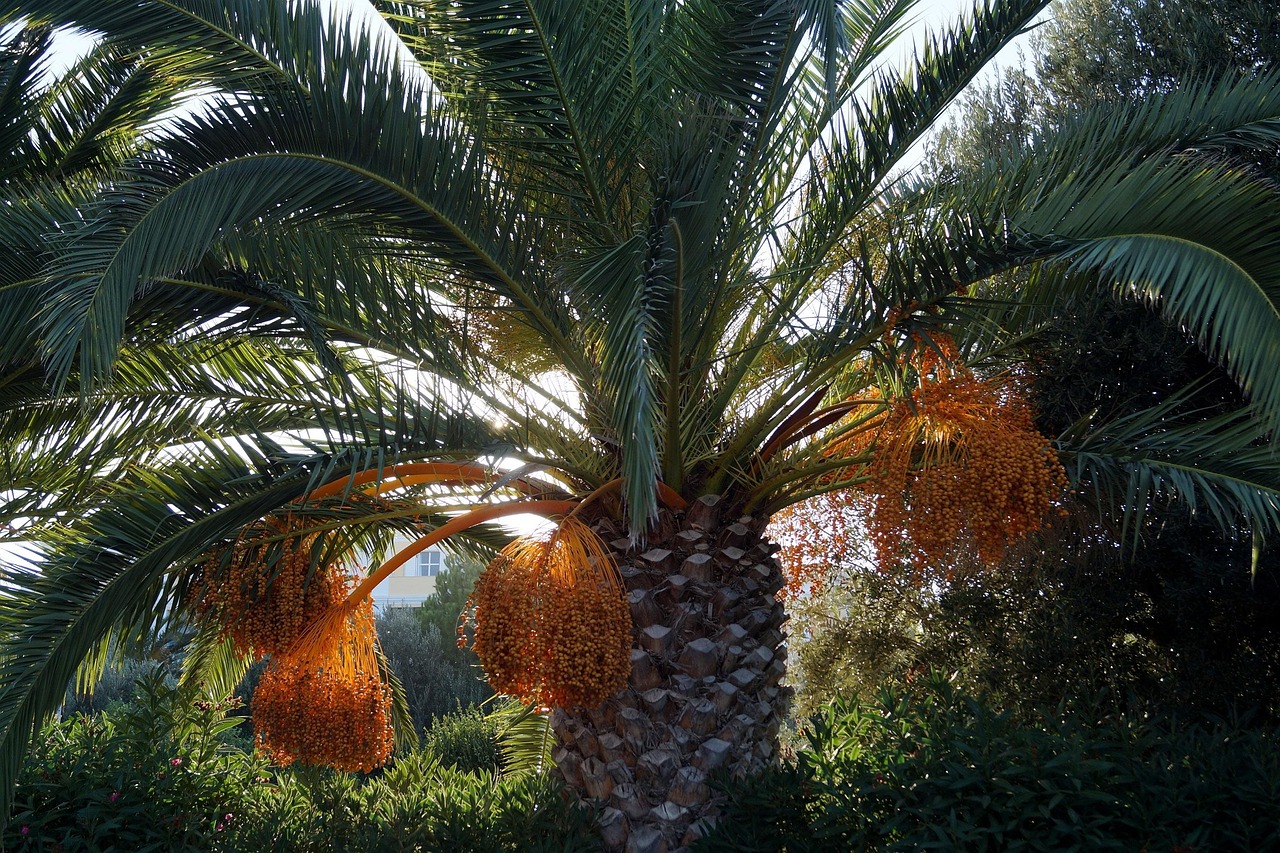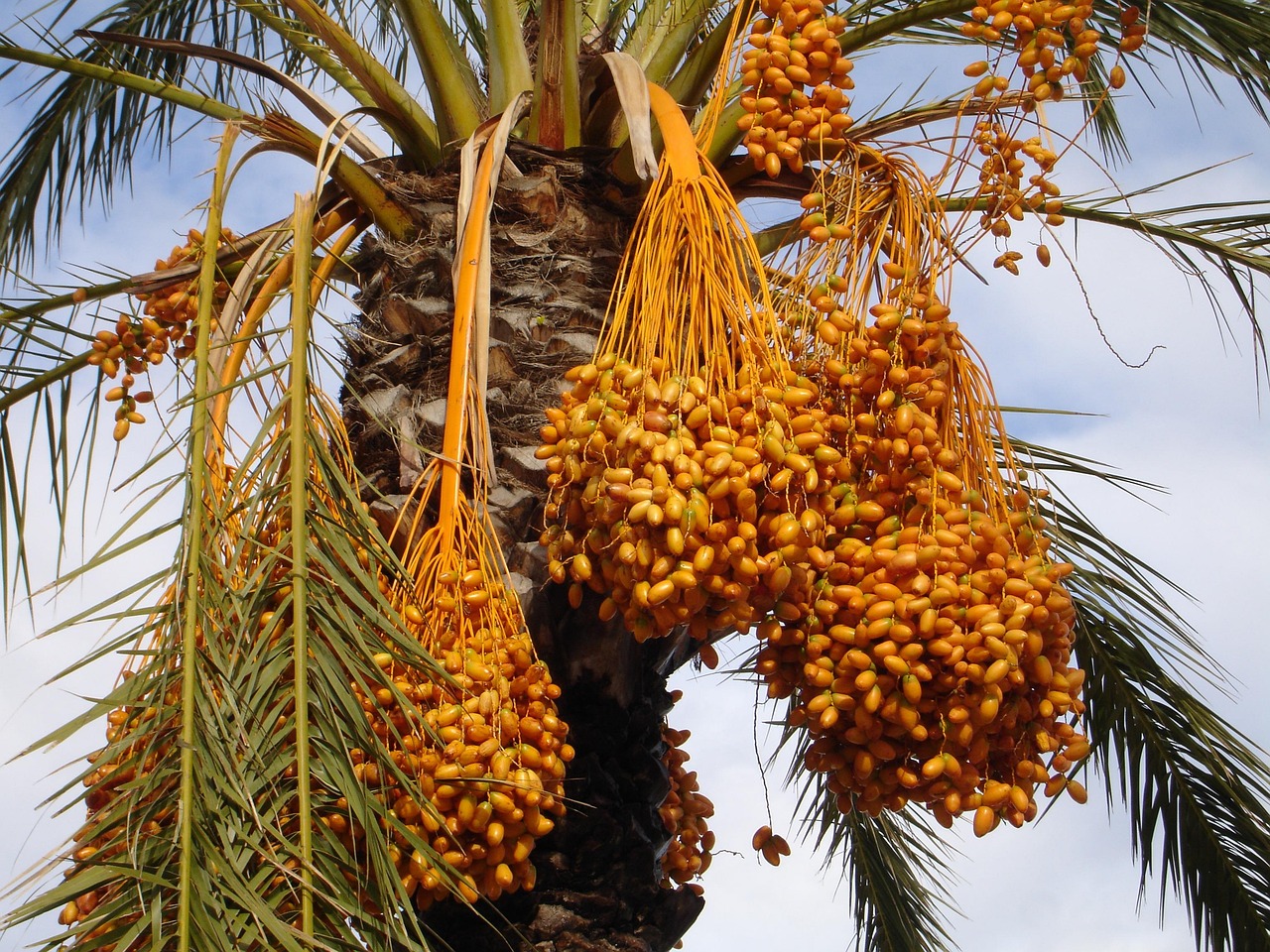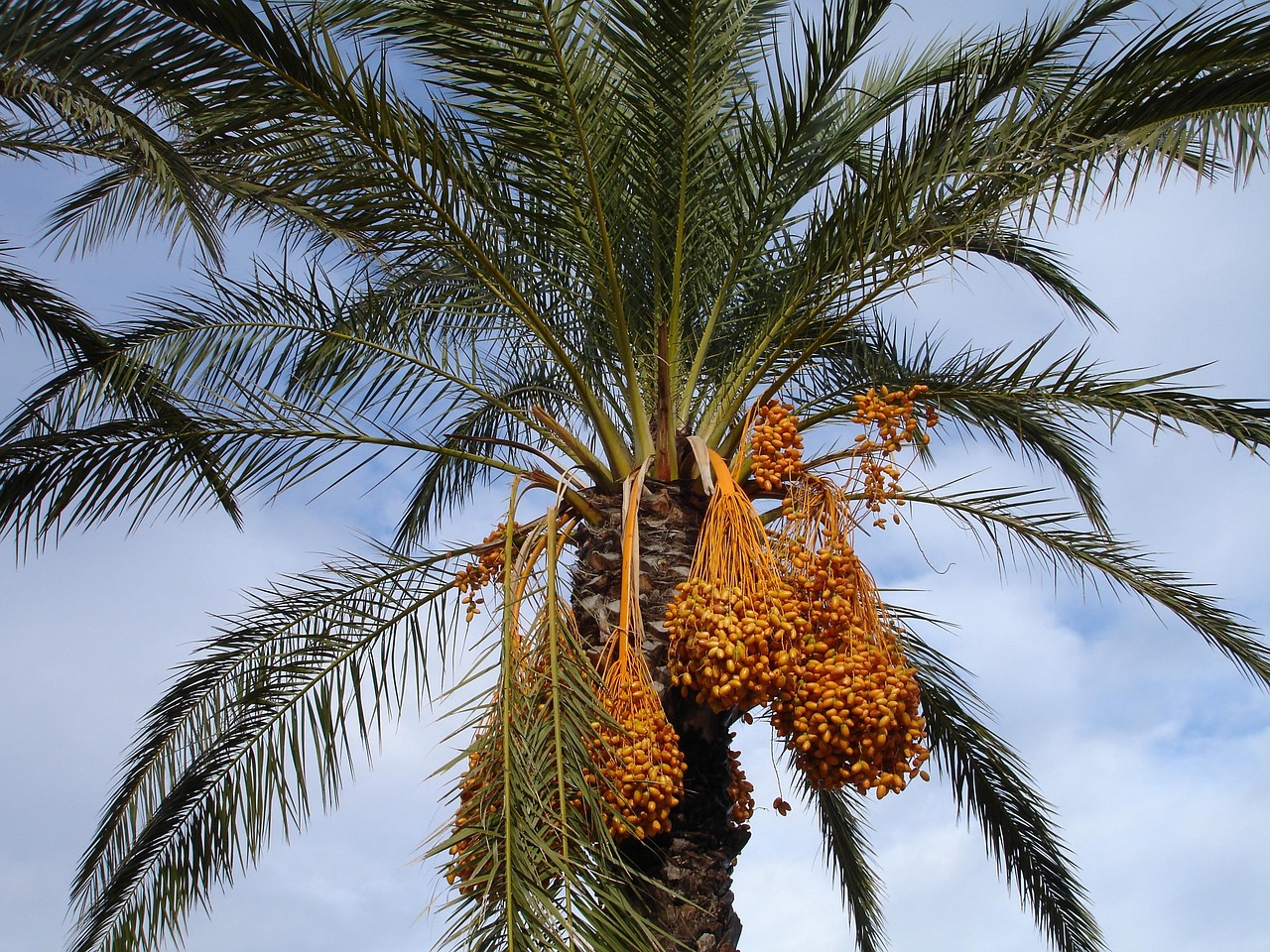Date palm pruning is essential for enhancing tropical landscaping. Proper pruning promotes healthier growth, improves aesthetics, and increases the overall lifespan of the tree. Regular maintenance prevents disease and encourages better fruit production, making it a vital practice for any landscape designer or gardener.
Date palms (Phoenix dactylifera) are iconic trees in tropical and subtropical regions. Known for their tall, slender trunks and feathery fronds, they bring a touch of elegance to any landscape. These palms not only provide shade but also bear delicious fruits that can be harvested for consumption. As beautiful as they are, date palms require regular care to thrive, and pruning is one of the most important tasks in their upkeep.

Pruning date palms involves removing dead or dying fronds, as well as any unwanted growth. This practice helps maintain the tree’s health and enhances its appearance. It also allows sunlight to reach the inner fronds, promoting better air circulation and reducing the risk of diseases. Furthermore, proper pruning techniques can help shape the palm and control its height, making it an essential practice for landscape architecture.
Understanding Date Palm Growth
Date palms can grow up to 75 feet tall, depending on the variety. Their growth rate is influenced by several factors, including climate, soil type, and available nutrients. A healthy date palm can live for over 100 years with proper care, making it a long-term investment in landscaping.
The fronds of date palms are composed of numerous leaflets that grow from a central stem. As the tree matures, older fronds naturally die off, creating a need for regular pruning. Understanding the growth cycle of these palms is crucial for effective maintenance.

| Growth Stage | Characteristics | Pruning Recommendations |
|---|---|---|
| Seedling | Small, tender leaves | Minimal pruning required |
| Juvenile | Developing trunk and fronds | Remove damaged leaves |
| Mature | Full height with numerous fronds | Regularly prune dead/diseased fronds |
Pruning should ideally take place during the active growing season, typically in the spring and early summer. This timing allows the tree to recover quickly from any cuts made. It is also crucial to use clean, sharp tools to avoid introducing diseases into the palm. Tools such as pruning shears and saws are commonly used for this purpose.
When pruning, it is essential to focus on removing fronds that are dead, yellowing, or brown. These fronds can harbor pests and diseases that may spread to healthy parts of the tree. Additionally, removing excess fronds can improve the overall appearance of the palm, allowing for a more open and attractive shape.
Benefits of Pruning Date Palms
There are numerous benefits to regularly pruning date palms within your tropical landscaping. Here are some key advantages:

- Aesthetics: Cleaned-up palms look more attractive and complement other landscape elements.
- Health: Regular pruning reduces the chance of disease spreading through dead or dying fronds.
- Fruit Production: Pruning can lead to better fruit yields by allowing more light into the canopy.
- Safety: Removing dead fronds reduces the risk of falling debris during storms.
- Growth Control: Proper pruning helps manage the size and shape of the palm.
In addition to these benefits, proper pruning techniques can enhance the overall biodiversity of your landscape. By creating an open canopy, more light reaches other plants, encouraging their growth as well. This integration supports a healthier ecosystem in your garden.
It is important to note that while pruning is beneficial, over-pruning can be detrimental. Removing too many fronds can stress the tree and hinder its growth. A good rule of thumb is to prune only about one-third of the fronds at any given time. This practice allows the palm to maintain enough foliage for photosynthesis while still benefiting from regular maintenance.
Date palm pruning is an essential skill for anyone looking to enhance their tropical landscaping. Understanding when and how to prune these majestic trees will not only improve their health but also elevate the beauty of your outdoor space.

Pruning Techniques for Date Palms
Employing the right pruning techniques is crucial for maintaining the health and aesthetics of date palms. Understanding how to properly execute these techniques can greatly enhance the effectiveness of your pruning efforts. Below are some recommended practices for pruning date palms that every landscaper should know.
Identifying the Right Tools
Before starting the pruning process, having the appropriate tools is essential. Here are some common tools used for pruning date palms:
- Hand Pruners: Ideal for small fronds and minor cuts.
- Loppers: Useful for thicker branches that require more leverage.
- Saws: Best for larger fronds and trunks that need trimming.
- Gloves: Protect your hands from sharp fronds and debris.
- Ladders: Necessary for reaching higher fronds safely.
Ensure all tools are clean and sharp to prevent injury to the tree and reduce the risk of transmitting diseases. Disinfecting tools before use can help maintain the health of your date palms.
When to Prune Date Palms
The timing of pruning plays a significant role in the health of date palms. The best time to prune is during the active growth period, which typically occurs in late spring to early summer. During this time, the tree can recover more quickly from cuts. Pruning during dormancy, such as in winter, is generally not recommended as it can stress the tree and inhibit growth.
Steps for Effective Pruning
To achieve effective pruning results, follow these steps:
- Assess the Tree: Examine the palm for dead or damaged fronds that need removal.
- Plan Your Cuts: Determine which fronds are unnecessary and will be removed, focusing on those that are brown, yellow, or diseased.
- Make Clean Cuts: Use your tools to make clean cuts at the base of each frond without damaging the trunk. Cut close but avoid cutting into the trunk itself.
- Remove Debris: Collect and dispose of all cut fronds and debris properly to prevent pest attraction.
- Inspect Regularly: After pruning, monitor the palm for any signs of stress or disease.
Pest and Disease Management
Date palms can be susceptible to various pests and diseases. Effective pruning helps manage these issues by improving air circulation and sunlight penetration. Here are some common pests and diseases associated with date palms:
| Pest/Disease | Description | Management Strategies |
|---|---|---|
| Red Palm Weevil | A destructive pest that burrows into the trunk. | Use insecticides and regularly inspect palms for signs of damage. |
| Leaf Spot | A fungal disease causing spots on fronds. | Improve drainage and remove affected leaves to prevent spread. |
| Palm Scale | A pest that feeds on the sap of palm fronds. | Apply horticultural oils or insecticidal soap for management. |
Being vigilant and proactive about pest and disease management is essential for maintaining healthy date palms. Regular pruning can assist in keeping these issues at bay by removing infected or infested fronds.
Environmental Considerations
Date palms thrive in specific environmental conditions, including ample sunlight, well-drained soil, and warm temperatures. When planning for pruning, consider how changes may affect these conditions:
- Sunlight Exposure: Ensure that pruned palms still receive adequate sunlight to promote healthy growth.
- Soil Health: Maintain soil quality by adding organic matter to support nutrient availability.
- Irrigation Practices: Adjust watering schedules as needed after pruning to ensure the tree does not become stressed.
Your approach to date palm pruning should harmonize with the surrounding environment. This consideration will help create a thriving landscape that benefits both the palms and other plants in your garden.
Caring for Pruned Date Palms
After pruning, it is crucial to care for your date palms properly. This care can help in recovery and promote healthy growth:
- Watering: Ensure consistent watering, especially during dry spells, to help the tree recover from pruning stress.
- Nutrient Management: Apply fertilizer suited for date palms to support new growth following pruning.
- Pest Monitoring: Keep an eye out for any signs of stress or infestation after pruning.
Caring for your date palms after pruning is just as important as the pruning itself. A holistic approach will ensure that your tropical landscaping remains vibrant and healthy for years to come.
Common Mistakes in Date Palm Pruning
While pruning date palms is essential for their health and appearance, there are common mistakes that gardeners may make. Recognizing these errors can help ensure a more effective pruning process and better outcomes for your palms.
Over-Pruning
One of the most prevalent mistakes is over-pruning. Removing too many fronds at once can stress the palm and hinder its growth. This can lead to a weakened tree that is more susceptible to diseases. It’s important to follow the one-third rule: do not remove more than one-third of the fronds in a single pruning session.
Ignoring Timing
Another mistake is pruning at the wrong time of year. Pruning during the dormant season can severely affect the palm’s health and growth. Always aim to prune during the growing season, which is typically in late spring or early summer.
Improper Cutting Techniques
Using dull tools or making improper cuts can damage the palm. Cuts should be clean and made close to the trunk without injuring it. Jagged cuts can lead to infection and pest problems. Always use sharp, sanitized tools to make precise cuts.
Neglecting Tree Health
Failing to assess the overall health of the tree before pruning can lead to ineffective practices. Always inspect your date palm for signs of disease or pest infestation so that you can address any issues before they worsen.
Seasonal Care for Date Palms
In addition to regular pruning, seasonal care is vital for maintaining healthy date palms. Different seasons require different approaches to care and maintenance.
Spring Care
As the growing season begins, it is essential to:
- Conduct Initial Pruning: Perform your primary pruning in late spring to prepare the tree for growth.
- Fertilize: Apply a balanced fertilizer designed for palms to encourage new growth.
- Monitor Watering: Increase watering as temperatures rise to keep the soil moist but not waterlogged.
Summer Care
In summer, maintain your date palms by:
- Regularly Checking for Pests: Inspect for pests like the red palm weevil, and treat any infestations promptly.
- Adjusting Irrigation: Ensure adequate water supply, especially during dry spells, to support fruit development.
- Mulching: Apply mulch around the base to retain moisture and suppress weeds.
Fall Care
As temperatures begin to cool, focus on:
- Final Pruning: Remove any dead fronds after the summer growing season.
- Preparing for Winter: Reduce watering slightly as growth slows down.
- Pest Inspection: Continue monitoring for any signs of pests or diseases.
Winter Care
During winter, care shifts towards minimizing stress on the palms:
- Avoid Pruning: Refrain from major pruning during the cold months unless absolutely necessary.
- Water Sparingly: Adjust your watering schedule based on rainfall and temperature fluctuations.
- Protect Young Palms: Use protective coverings if temperatures drop significantly in your area.
Enhancing Landscaping with Date Palms
Date palms can significantly enhance tropical landscaping when integrated thoughtfully. Their unique appearance and height can serve various design purposes in gardens and public spaces.
Cohesive Design Elements
When incorporating date palms into your landscape, consider these design elements:
- Grouping: Plant date palms in clusters to create a dramatic focal point. This arrangement mimics their natural habitat and enhances visual interest.
- Layering: Use shorter plants in front of date palms to create layers. This technique adds depth to your landscaping design.
- Diverse Plant Pairings: Pair date palms with tropical flowering plants or ground covers that thrive in similar conditions.
Functional Uses
Date palms can also serve functional purposes in landscaping:
- Shade Provision: Their tall fronds provide ample shade, making them ideal for outdoor seating areas.
- Windbreaks: Use date palms as natural windbreaks in open landscapes, helping protect other plants from wind damage.
- Drought Resistance: Once established, date palms are drought-resistant, making them suitable for sustainable landscaping solutions.
The integration of date palms into landscaping not only enhances visual appeal but also contributes to creating a functional and sustainable outdoor environment.
As you consider the overall impact of date palms in your landscaping, it’s important to recognize their versatility and adaptability. Not only do they add height and elegance to outdoor spaces, but their ability to thrive in varying conditions makes them a valuable asset in tropical landscaping.
Maintenance Beyond Pruning
While pruning is a critical aspect of date palm care, ongoing maintenance is equally important for ensuring their health and beauty. Here are some additional maintenance practices to keep in mind:
- Irrigation Management: Proper watering schedules are vital. Date palms prefer deep watering less frequently rather than shallow watering often. This encourages deep root growth.
- Soil Quality: Regularly test the soil to assess pH and nutrient levels. Amend the soil as necessary to promote healthy growth.
- Mulching: Apply mulch around the base of the palms to retain moisture and suppress weed growth while providing additional nutrients as it decomposes.
- Regular Inspections: Check for signs of pests or diseases throughout the year, not just after pruning. Early detection is key for effective management.
By incorporating these maintenance practices into your routine, you can ensure that your date palms remain healthy and continue to enhance your tropical landscape.
Creating a Biodiverse Landscape
Date palms can play a significant role in promoting biodiversity within your garden. When planted alongside other native plants and trees, they can provide essential habitat and food sources for local wildlife. Consider these tips for promoting biodiversity:
- Native Plant Pairings: Combine date palms with native plants that thrive in your region. This can support local pollinators and wildlife while reducing the need for irrigation and fertilizers.
- Diverse Plant Heights: Incorporate plants of varying heights to create layers in your landscape. This diversity can offer shelter and nesting sites for birds and insects.
- Pollinator Gardens: Include flowering plants that attract pollinators, such as bees and butterflies, near your date palms. A diverse range of flowering plants can enhance the beauty of your landscape while benefiting the ecosystem.
Creating a biodiverse landscape not only supports local ecosystems but also enriches your experience as a gardener or landscaper. The beauty of a well-planned garden lies in its ability to attract life and create a harmonious environment.
Considerations for Urban Landscaping
Date palms are increasingly popular in urban settings due to their striking appearance and adaptability. However, urban landscaping presents unique challenges. Here are some considerations for successfully integrating date palms into urban landscapes:
- Space Constraints: Be mindful of the space available when planting date palms. Ensure they have enough room to grow without interfering with structures or power lines.
- Soil Compaction: Urban soils may be compacted, limiting root growth. Consider raised beds or soil amendments to improve drainage and root health.
- Environmental Stressors: Urban settings can expose palms to pollutants and stress from foot traffic. Implement protective measures, such as barriers or strategic planting locations, to mitigate these effects.
Addressing these challenges effectively will help ensure that date palms thrive even in bustling urban environments, enhancing the aesthetic appeal of city landscapes.
Final Thoughts
Date palm pruning is an essential practice for anyone looking to optimize their tropical landscaping. Through proper pruning techniques, maintenance practices, and thoughtful integration into diverse landscapes, date palms can flourish and contribute significantly to outdoor beauty. By understanding their needs and potential roles within ecosystems, gardeners can create vibrant spaces that are not only visually appealing but also sustainable.
The journey of caring for date palms is rewarding. From the moment you plant them to the ongoing care required throughout their lives, these majestic trees can transform any landscape into a tropical paradise. Remember to stay informed about best practices, remain attentive to their needs, and enjoy the process of nurturing these remarkable plants.
With dedication and knowledge, your date palms will not only thrive but will also serve as a testament to the beauty and diversity that tropical landscaping can offer.
